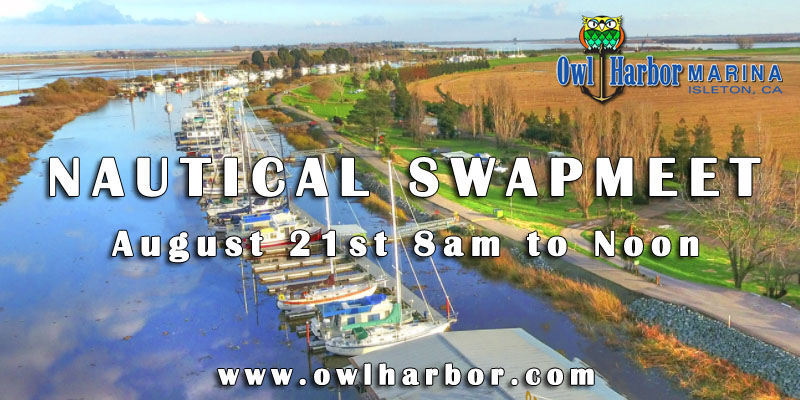
All Transpac Divisions Now on Course for Honolulu
Friday Starts
The second wave of starters in the 51st Transpac Race crossed the line off Point Fermin on Friday. The 15 boats enjoyed a quick getaway, faster than the previous starters on Tuesday. A building westerly breeze of 9-12 knots helped propel the Division 5, 6 and 7 entries off to a fast start on their first leg of the trip, leaving the West End of Catalina to port before leaving California behind, the next landfall being at Diamond Head in Honolulu.
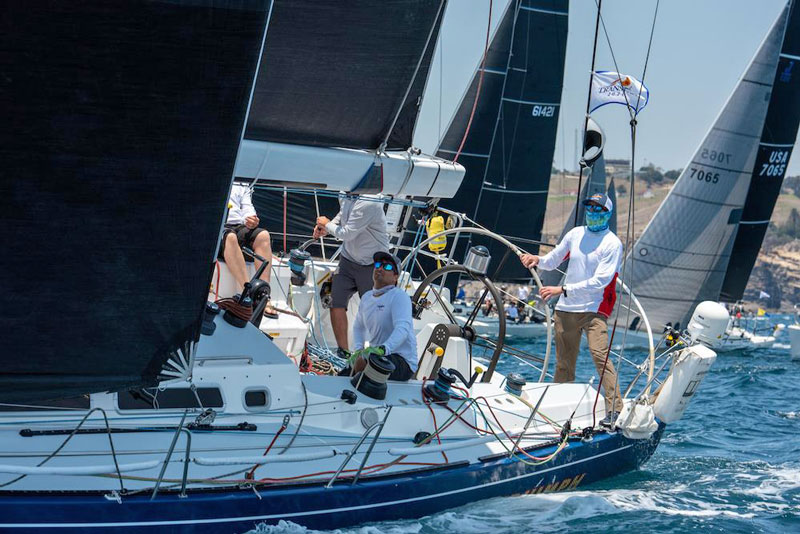
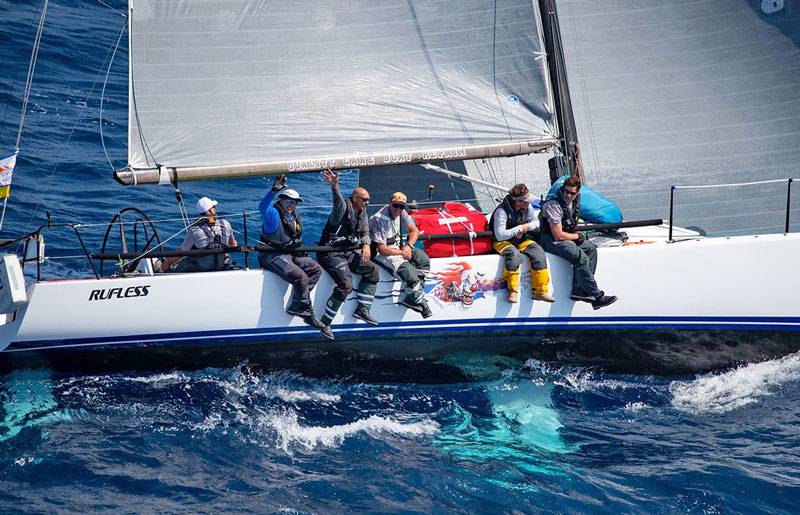
Unfortunately, one team in the Friday fleet will not have the race they’d intended. Just several minutes after the start, spectators nearby reported hearing a loud bang. Bill McKinley’s Ker 46+ Denali3 spun head to wind and dropped their jib on deck. A glance aloft revealed not a broken halyard, but a carbon mast tube crunched and cracked at the splice halfway up the spar.
With the shrouds slack and a pronounced sharp bend at the break, the team managed to get the mainsail down before limping back to Cabrillo Marina, nursing the cracked mast carefully so it did not collapse completely, causing more damage and possible injury to the crew. “Our goal now,” said McKinley, of Harbor Springs, Michigan, “is to stabilize what we have and evaluate our next options.” This is a heartbreaking setback for the crew of nine. Most of the crew were doing their first Transpac.
Saturday’s Starts
Powered by the best breeze of the week — 10-15 knots at the start — Saturday’s final 19 entries in four divisions vaulted off the line toward Honolulu, 2,225 miles away. These are the fastest boats in the fleet, sailing in Divisions 1, 2, 3 and 4. They vary from 52 to 77 feet in length, with all expecting a speedy passage ahead.
The current monohull course record, set by the VPLP 100 Comanche in 2017, is 5 days, 1 hour, 55 minutes, 26 seconds. That works out to an average speed of more than 18 knots. “A few days ago, we got excited when the weather models lined up for what looked like it could be a record run,” said Peter Isler on Saturday. Isler is the navigator on Roy Disney’s turbo Volvo 70 Pyewacket 70. “This is less certain now, but it still looks like a fast race ahead if we can get off the coast tonight.”
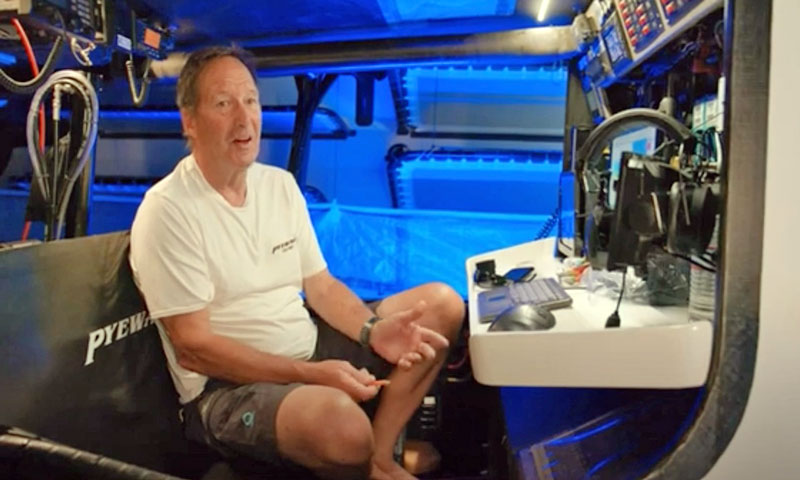
Monday Morning
As of this morning, Cecil and Alyson Rossi’s Marin County-based Farr 57 Ho’okolohe was just past the halfway point. They’re still well in the lead for line honors. Pyewacket 70 is currently in first place in ORR overall. Everyone appears to have solid trade winds for the ride to Oahu, with an elongated Pacific High to the north, and a couple of tropical storm systems — including Hurricane Felicia — to the south. Felicia is rapidly weakening as she moves west, and does not appear to be a threat to the fleet. Follow along at https://yb.tl/transpac2021#.
Max Ebb — A Lot of Bunk
Anyone who hasn’t crewed a long-distance race might sometimes wonder about the sleeping arrangements during a race. With the Transpac race in full swing, we thought this would be a good time to share Max Ebb’s story from our July issue of Latitude 38, in which Max shares his experience of ‘hot-bunking’ with seven other crew members.
It was a damp and foggy night. We were racing down the coast, and the wind in the thick marine layer was light but reasonably steady. My watch was over and the schedule had me shifting to “standby” mode.
This boat uses a “volleyball style” watch rotation scheme. When conditions are not demanding, “standby” is the same as “off watch,” so I unclipped my tether and went below to get some much-needed sleep. As usual, I hadn’t slept a wink during my first two off-watches, but by the third off-watch I was ready for bedtime. And really looking forward to it, too. There’s no better sleep than bundled into the quarter berth of a well-run race boat in smooth water and a steady breeze.
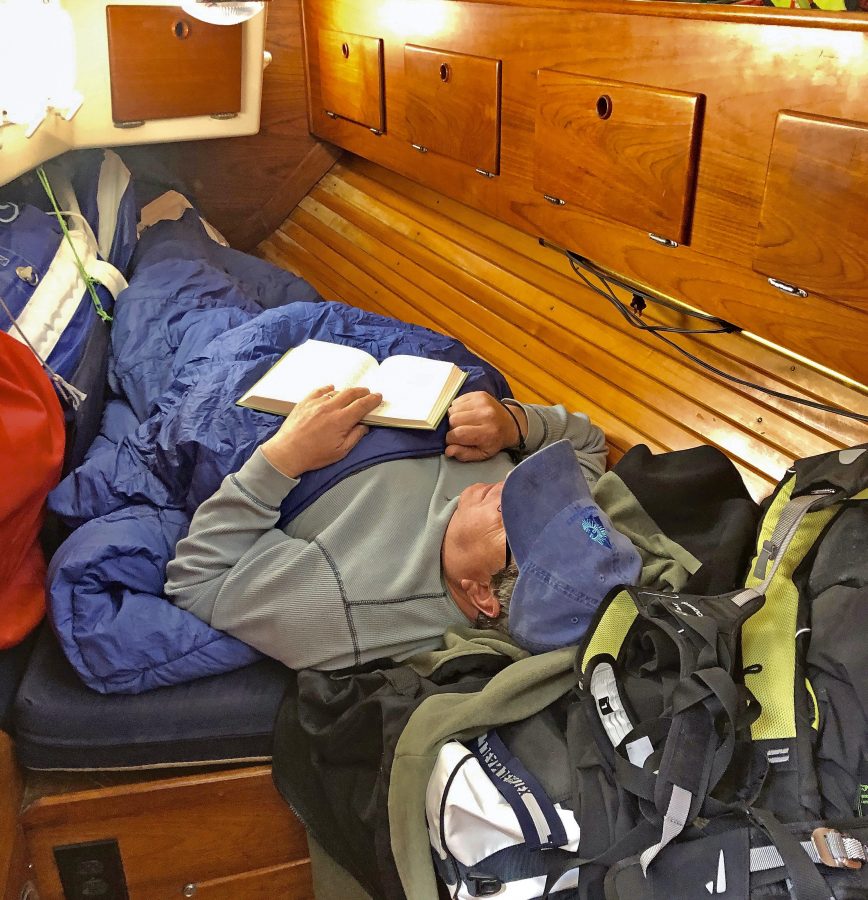
We had a racing crew of eight: seven watchstanders, plus Lee Helm at the chart table. She had managed to talk her way into not standing watches so she could be full-time navigator. “It’s like, a 24-hour job,” she insisted. “There are three weather models we need to follow, and each one updates every six hours, but the times they become available are staggered, so there’s a new map to download, like, every two hours. And the High-Res Rapid Refresh 18-hour prog updates hourly, plus the real-time buoy reports, and I also monitor the tracker and AIS data from the fleet. I only have time for, like, short catnaps. But I still schedule myself for a watch on deck very late at night, when the crew attention span is lowest and they might need an extra push.”
Lee had her own berth, and that left five berths for seven watchstanders. No problem. I expect to hot-bunk on a race boat, so two pairs of crew, on opposite sides of the rotation, would share their off-watch bunks. But when I came off watch, my bunkmate was still snoring away.
Continue reading at Latitude 38.com to find out how Max solved this problem.
Don’t Miss Owl Harbor’s Annual Nautical Swapmeet
If heading to the Delta is on your summer calendar, make sure you stop by beautiful Owl Harbor. Don’t miss their annual Nautical Swapmeet on August 21st to find boating treasures of all kinds.
Sailing on Friday Is Good News Because Saturday Comes Next
Sailing on Friday is always a good way to end your week and slide into the weekend. And for those in the know, the fresh summer vibe of July is just that — a vibe — not a guarantee of hot, or even warm, conditions. San Francisco is famous for its tourists on summer vacation walking across the Golden Gate Bridge in shorts and a T-shirt, only to feel like Scott and Amundsen racing to the South Pole. July sailing is similar. Yet despite the reputation, summer sailing on San Francisco Bay remains a buffet of choices: brisk and challenging if you want it, light, warm and inviting if that’s what you prefer. In the end, sailing San Francisco Bay is always good news.
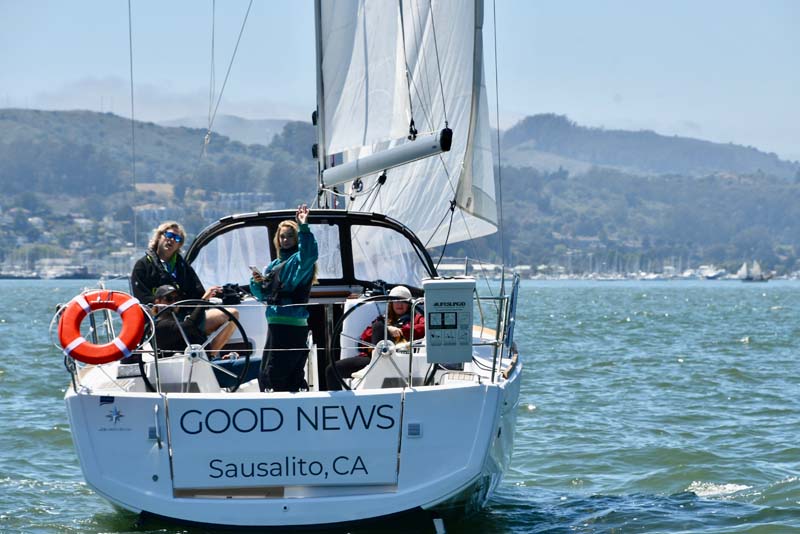
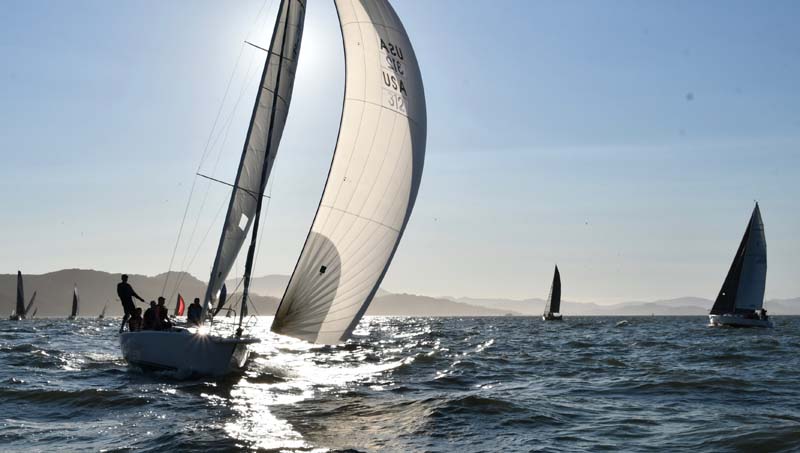
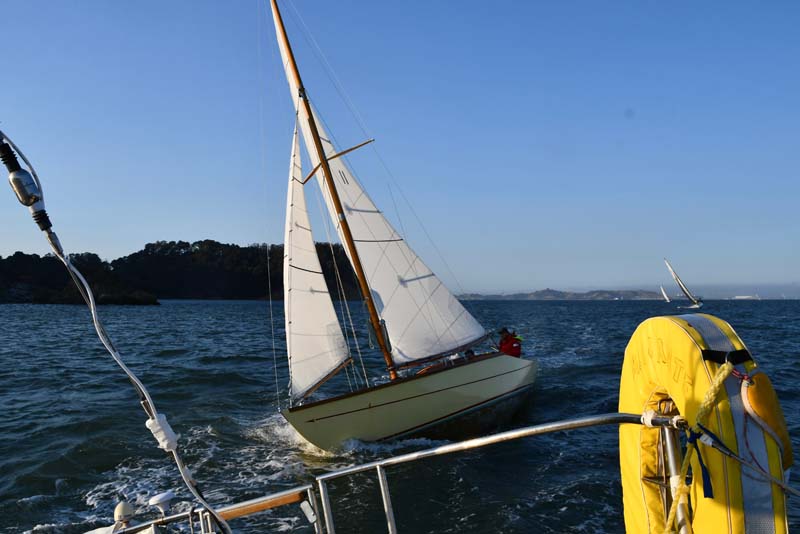
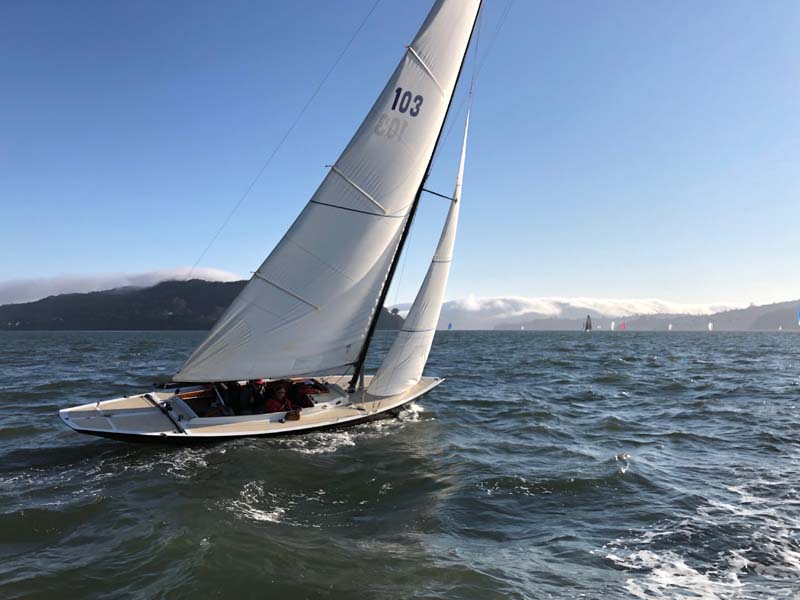
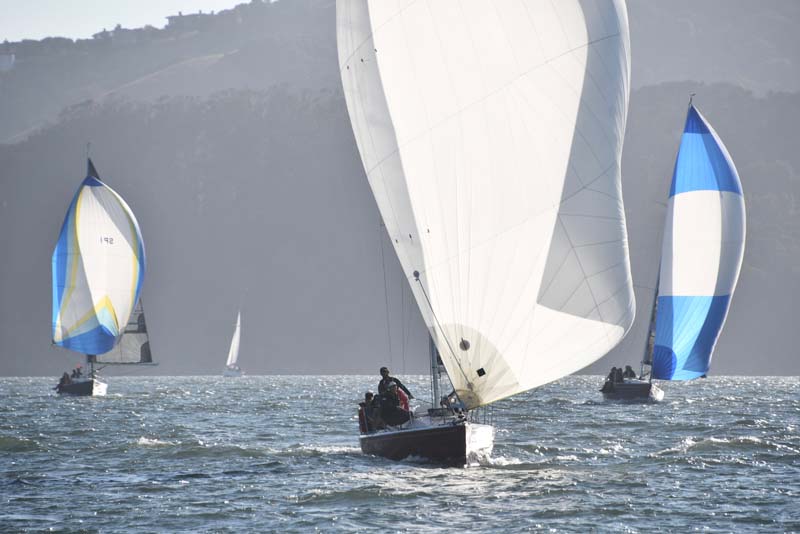
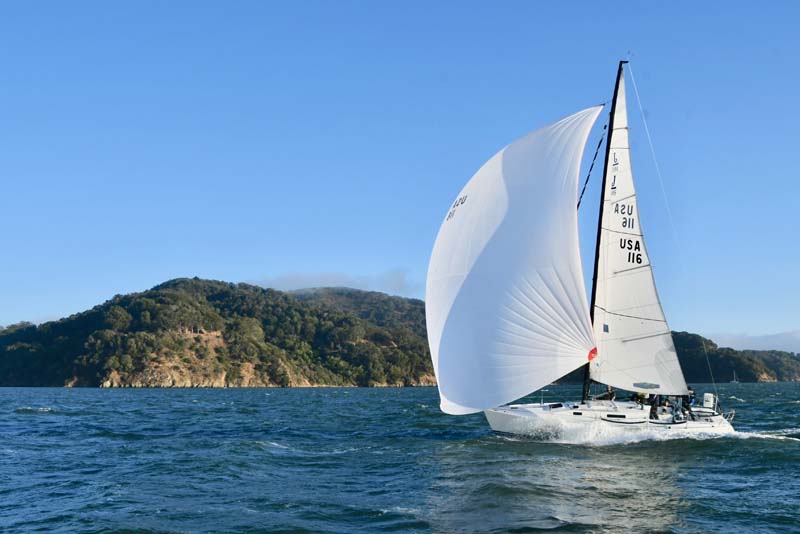
Sailing San Francisco Bay in July and August can be a chilly affair, but if you choose wisely, there are other options. The Oakland Estuary and the North and South Bay all offer welcome respite from the Central Bay’s Mach 1 wind tunnel.
Regardless, Sausalito Yacht Club held a Saturday/Sunday J/105 invitational this past weekend, providing sporty, but mostly sunny conditions with their out-the-Gate courses. And the St. Francis Yacht Club hosted 124 boats for an enthusiastic fleet of participants in the four-day ILCA North Americans.
Unlike the tourists, you know T-shirts and shorts are risky attire on the Bay. You can either dress appropriately for your chosen microclimate, or choose to sail when and where it’s warm. Whatever day it is, Friday is not far away — and then comes Saturday.
SailGP Throws the Black Flag in British Event
In a weekend that was all things England with the British F1 Grand Prix in Silverstone, golf’s British Open at Royal St. Georges, and just a short week after the country’s crushing loss to Italy in the Euro Soccer final, SailGP brought their foiling sailing circus to Plymouth for the third event of the 2021 season.
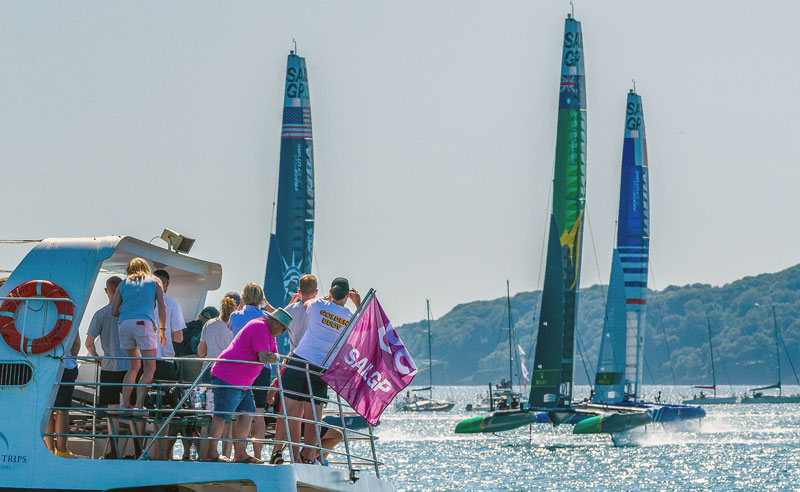
Unfortunately, the Great Britain team was minus their hometown star, the legendary Sir Ben Ainslie — one of the best on the water in any form of sailing or foiling craft — who was taking a break from the series to attend to a long-standing personal commitment.
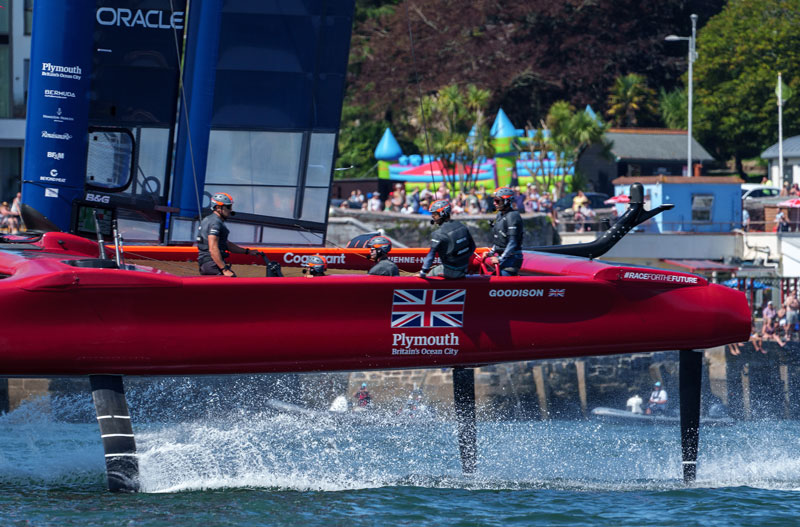
That left the teams that weren’t already missing a few of their own to the upcoming Olympic Games in Tokyo to generate excitement for the frenzied throngs who dotted the natural stadium amphitheater in massive numbers.
The weekend provided more than enough drama between the uber-aggressive Spanish and Team USA, the closest thing to our local contingent, with Coronado’s Cooper Dressler, the Bay Area’s Daniela Moroz, San Diego’s Andrew Campbell, and Jimmy Spithill calling California home.
Australia eventually captured the weekend, but the controversy with Spain ruled the day. SailGP’s chief umpire, as well as USA’s Spithill, felt that Phil Robertson, Spain’s Kiwi skipper, had crossed the proverbial line between an amazing starting maneuver and being blatantly dangerous to the rest of the fleet, especially the Americans.
On the first of two days of racing, Spain received a first-ever black flag. Just seconds from the start of the critical third race of the day a last-minute, diving maneuver toward the line by Robertson surprised the fleet with a move that has caused concern among SailGP race officials at previous events, placing Spithill and company once again in the path of a potential unsolicited collision.
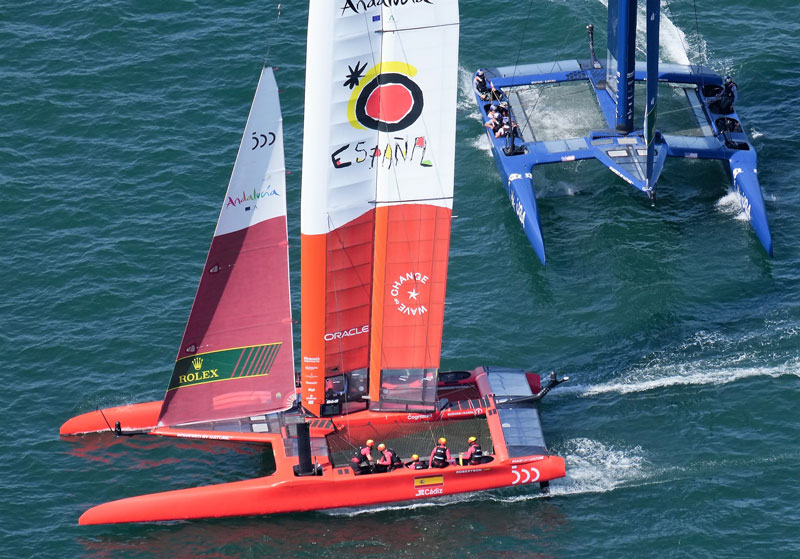
Spithill, with the right of way in leeward position, quickly bore away to avoid contact, while pilot Rome Kirby protested the infringement to race umpires, who disqualified the Spanish team, resulting in the black-flag decision by SailGP.
“How many times do we have to see it?” said Spithill. “It’s obvious Phil has done this more than once. It’s not his first offense. It’s well past three strikes. I’m not at all surprised to see him black-flagged.”
The black-flag disqualification was instituted following several racing incidents in this season’s Bermuda Sail Grand Prix to deter future contact between teams.
“It’s a spectacular move when it when it goes well,” said chief umpire Craig Mitchell. “But it’s also a very high-tariff maneuver. And when you get it wrong, there can be quite catastrophic consequences. You don’t get here unless you’re a winner. And winners take risks. This time it just didn’t pay off.”
“He either was going to crash into the mark and hurt someone on his boat or crash into us and hurt someone on our boat,” continued Spithill. “When you see it happen at MotoGP or in F1 [like what happened this weekend between Max Verstappen and Lewis Hamilton] they start fining and penalizing the driver for the very reason that you can hurt other people. The fact that this isn’t his first time doing something like that — I think it’s justified.”
“In the moment we felt it was a rough call,” said Robertson. “We didn’t really infringe anyone, and we were going twice the speed of everyone else and we got over the top. After reviewing it we thought exactly the same thing. Looking at the video footage it looks like we were well clear, so I’m really interested to hear what the umpires have to say.
“I think, at best, maybe we infringed the Americans, but they were quite low and veering away as well,” said Robertson. “It is what it is. We’re moving on, forgetting about it. I guess the precedent has been set now for what you can and can’t do, and if you get a good start and slightly infringe on someone you’re DSQ’d.”
Clear of the incident, Spithill accelerated and the American team extended their lead to end the day with a convincing win, ensuring a place for the penultimate podium finale. “Anytime you get to race in the podium race it’s a great position to be in. Unfortunately for us, we had a bit of a technical issue with our starboard rudder that deteriorated throughout the day,” said Spithill. “This was a good result for the team. Let’s face it, we’ve had technical issues at each event so far, and we’ve now climbed up to halfway in the field.”
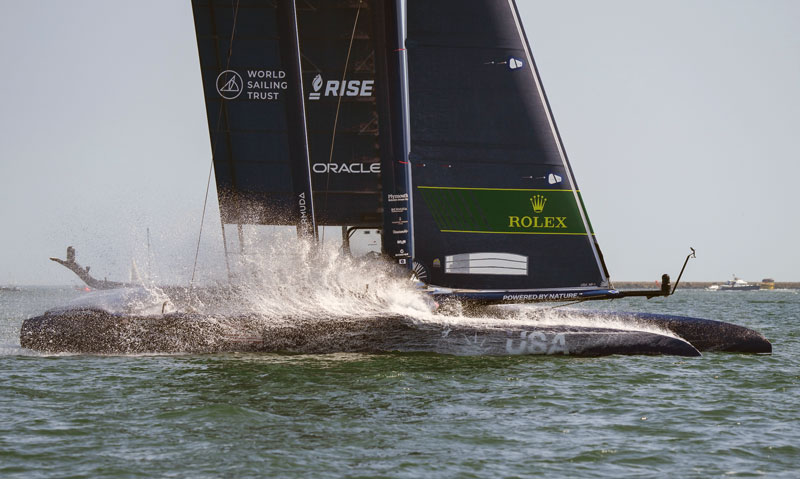
The Aussies, skippered by Tom Slingsby, beat France and the United States in the three-team winner-takes-all final to move into first place in the season standings.
“It’s no secret that light air is our biggest weakness, and it’s my weakness, but we’ve been working on it,” spoke Australian skipper Tom Slingsby. “The last event in Taranto was a bit embarrassing for our team, and I felt bad for not doing the team justice. So, we’ve worked on our light air.”
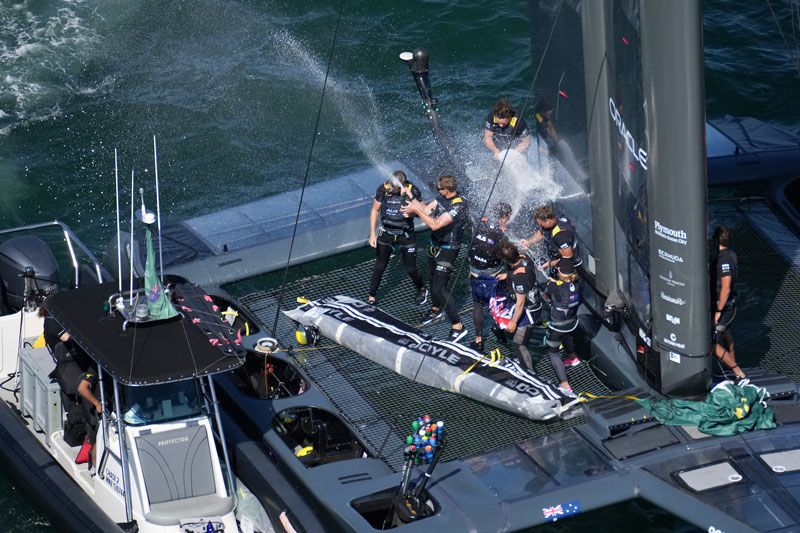
SailGP packs up and heads over to the ‘City of Smiles’ — Aarhus, Denmark — for the next event on August 20-21.
“To have a shot at the trophy and the $1 million at the end, you need to qualify for as many final races as you can to put yourself in the ultimate final in San Francisco. That’s certainly our goal,” said Spithill. “We’ve yet to get through a weekend and finish all the races without something happening to us, so we’ll take it day by day. We’re always learning!”

